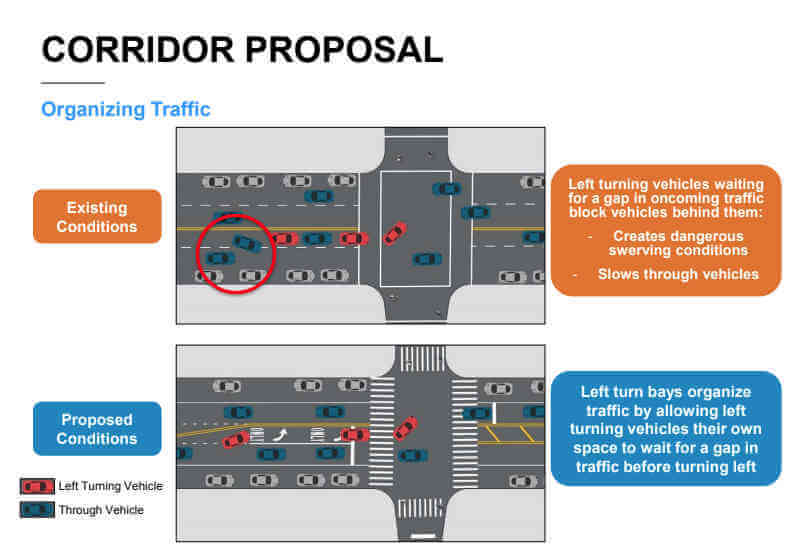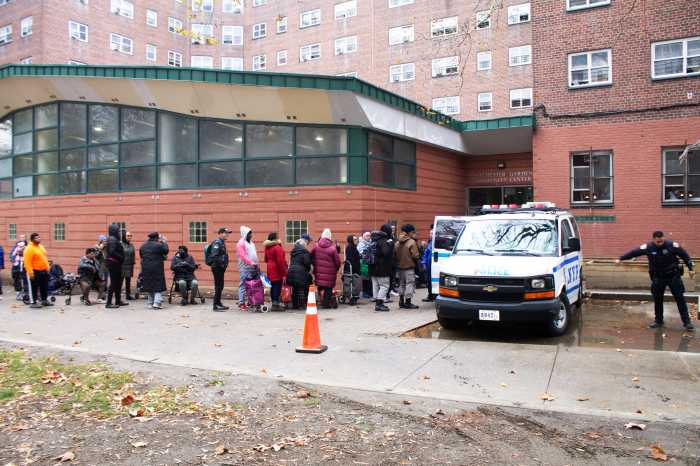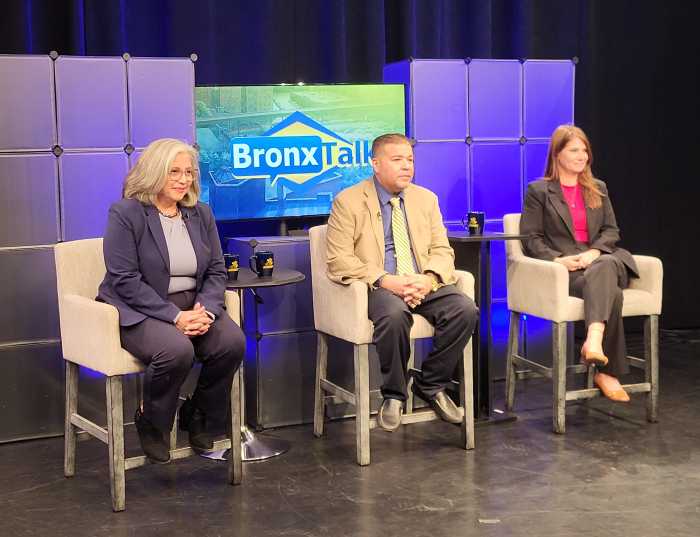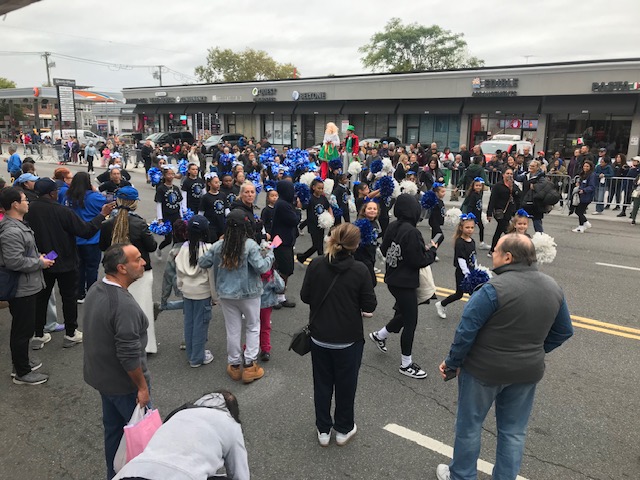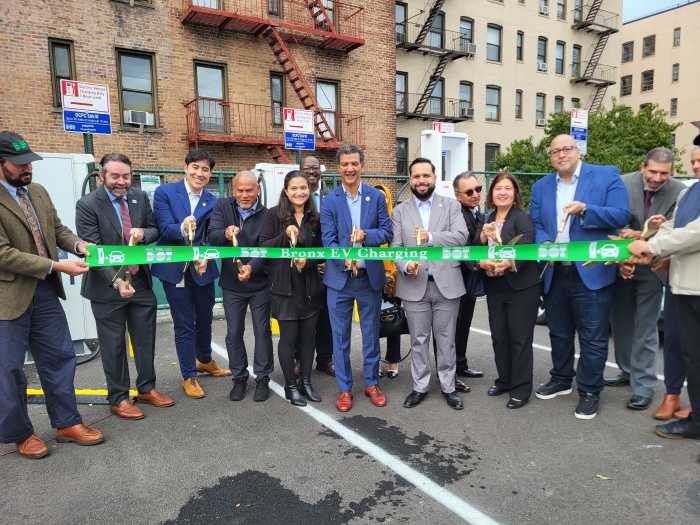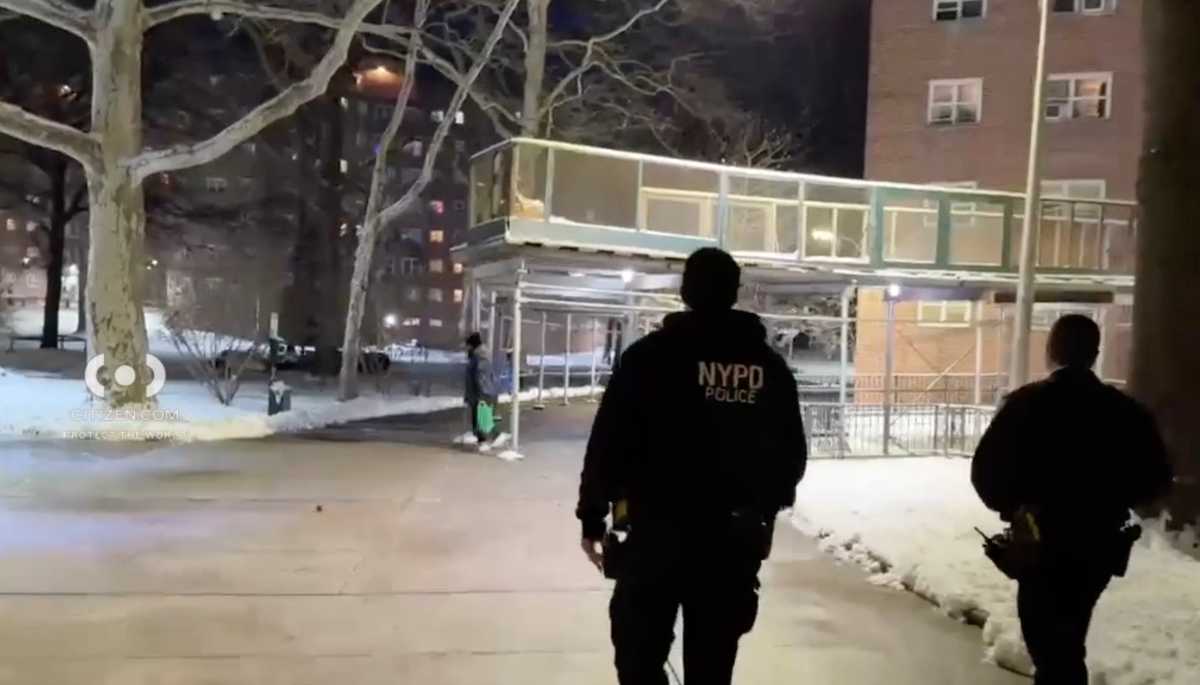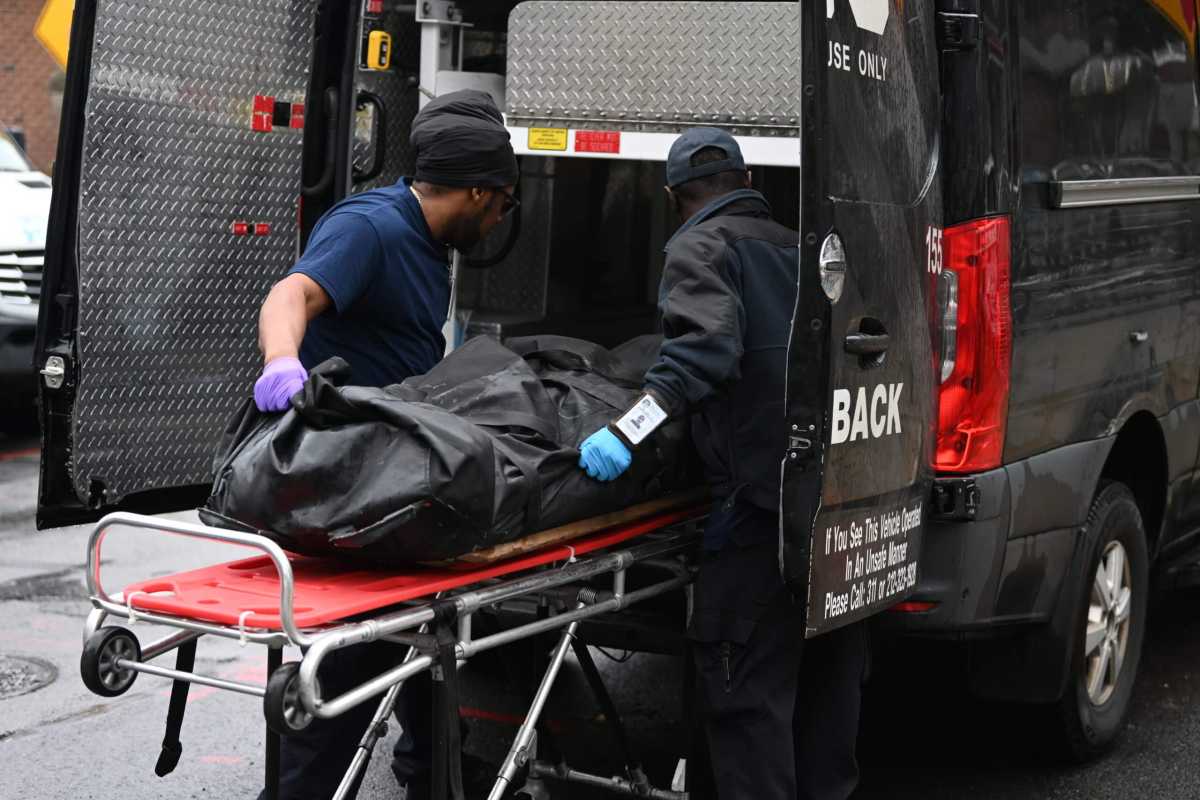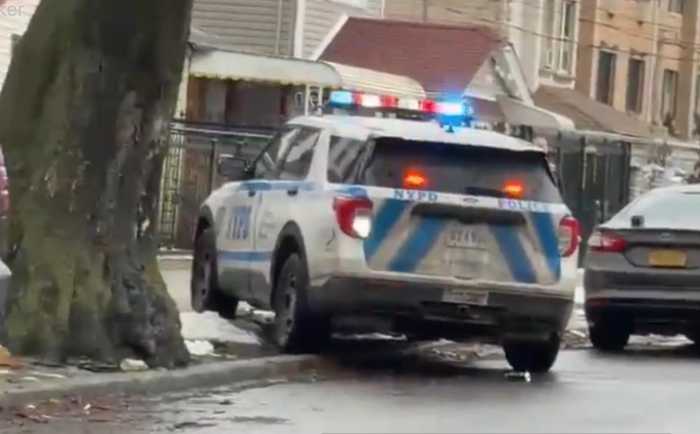The city’s plan to improve traffic flow on Morris Park Avenue has been revised after its original proposal was greeted with absolute disdain by the community.
In an attempt to reduce pedestrian injuries and improve traffic flow, the NYC Department of Transportation is trying to implement a ‘road diet’ proposal for the troublesome mile and a half stretch of road that includes: converting left lanes exclusively into turning bays, while also adding bike lanes plus two loading zones for trucks during set hours.
When first presented to Community Board 11 in February, the proposal was brought to a screeching halt by the board and residents alike.
DOT’s most-recent revised proposal has removed the bike lanes on both sides of the avenue; however the community still opposes forfeiting one of the avenue’s travel lanes for a dedicated left-hand turning bay.
“They threw us a bone with the bike lanes, but this still isn’t something that the community wants,” said CB 11 chairman Al D’Angelo. “Cutting a lane down [on Morris Park Avenue] is only going to make traffic worse and double parking more difficult,” the chairman added.
D’Angelo, who also owns Side Street Sports on Morris Park Avenue, went on to explain how the adjacent side streets off the avenue are already suffering from excess commercial traffic and that the ‘road diet’ plan would push even more traffic to these streets as vehicles try to avoid the slow moving traffic on Morris Park Avenue caused by the proposed changes.
Many residents also testified during that February meeting that congestion from commercial traffic on their side streets is constantly getting worse.
Another feature of the DOT plan allows commercial vehicles street side unloading during certain ‘set hours’, which the plan’s opponents believe isn’t a viable solution.
“There’s no such thing as set hours,” said Edith Blitzer, president of the Pelham Parkway Neighborhood Association. “I have a loading zone near me and trucks unload there from dawn to dusk,” she added.
However in response to the unloading issue, DOT Bronx Borough Commissioner Nivardo Lopez said he has seen similar set aside areas improve traffic after this type of change.
“We’ve seen a reduction in crashes and injuries from proposals like this,” said Lopez.
D’Angelo is advocating for implementing speed cameras or staggering the traffic lights on the corridor as a suitable alternative plan to increase pedestrian safety.
“Realistically you can get through that area on one set of green lights if you speed, but by staggering the lights then drivers won’t have the opportunity to speed which will reduce the chance of pedestrian and vehicular accidents, and once someone gets a speeding ticket in the mail from a camera, they certainly won’t do it again in that spot,” D’Angelo said.
In May, CB 11 voted to formally send a letter to Mayor de Blasio and the city to express their resounding opposition to the road diet.
Among the list of signatures on said letter are the six local and state elected officials who represent the area, including Councilman Mark Gjonaj, Senator Jeff Klein and assembly members Nathalia Fernandez and Michael Benedetto.
“My office received two phone calls in support of the road diet, but neither individual lived in the community,” said Gjonaj, who was also present at the meeting, as he endorsed the community’s letter. “If this community does not want these plans, then we don’t want them either,” he added.
More than being frustrated by traffic, Morris Park residents are frustrated over being poorly represented by City Hall.
“Not one elected official has supported this plan. We have made our stance known loud and clear. We supposedly live in a democracy and this is what the people want, that’s something that shouldn’t be overruled by a city agency,” D’Angelo said.

